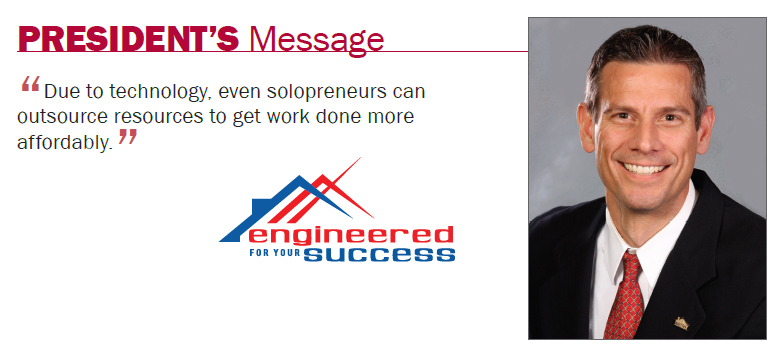Written By: 2017 President Steve Schultz, RMP® MPM®
Three Top Trends in Property Management
On my path to becoming the 2017 President of NARPM®, I have had the unique opportunity to see firsthand, the development of property management trends from across the country. Over the last several years, I noticed some common patterns in our industry, regardless of geography. The following are three top trends in our industry:
WALL STREET INTEREST IN SINGLE-FAMILY HOME PROPERTY MANAGEMENT
The interest Wall Street now has in the business of managing single-family homes has disrupted the property management market. In the not so distant past, renting single-family homes was a mom-and-pop industry. The market continues to predominately be a mom-and-pop business, but the landscape is changing rapidly in many areas of the country.
Approximately eight years ago, investors were spending a great deal of money in select U.S. cities on distressed single-family homes — purchased at rock bottom prices. These investors included companies like BlackRock, American Homes 4 Rent, Colony American, and many more. Some of these companies were buying hundreds of homes per month and hiring local property managers to oversee their new single-family home portfolios.
In some cities, there were not enough property managers available to take on the rapid growth of investor properties, which led to many investor companies adding an in-house property management component to their business. As a result, many of these companies became proficient at managing their own portfolios; and they started to market for property management opportunities outside of their business. This evolution has created a great amount of pressure for today’s local Property Managers. In many cities, property managers must now compete with these massive investment companies that benefit from the cost advantage that arises with increased output of a product. In this case, the product is rental units. Established operational efficiencies over a larger number of units helps to reduce costs per unit for the investor companies, now wanting to market for property management opportunities outside of their own portfolio.
PROSPECTIVE TENANTS SELF-SHOWINGS
There is a movement toward prospective tenants conducting self-showings of available rental properties. This has become possible through technology advancements. Various software providers have made it very convenient for prospective tenants to see vacant houses without an agent or property manager present. The scheduling process is entirely automated through the management company’s website. A prospective tenant can now provide a specific form of identification (credit card, driver’s license, etc.) to obtain a one-time code to a lock box to gain access to the property.
There is no need for a prospective tenant to wait for a call back, schedule a time with a live person, or wait to see a property. With these new software solutions, the prospective tenant can see a property and schedule a time for a showing in a matter of minutes. My prediction is that within the next five years, this technology will saturate the single-family home rental market and will be the preferred choice to view vacant rental homes.
VIRTUAL ASSISTANTS
Outsourcing to virtual assistants is becoming more common, even within small property management companies. “Offshore outsourcing” is no longer available only to large US-based corporations. Due to technology, even solopreneurs (a person who sets up and runs a business on their own) can outsource resources to get work done more affordably. However, “outsourcing” doesn’t have to happen overseas. There are many property management company owners that have virtual assistants working throughout the United States. Virtual assistants are taking on any role where help is needed. The “assistant” only needs a computer and/or a phone to complete tasks remotely. Companies delegate certain responsibilities to someone in another State or another country that can be completed just as easily.
SUMMARY
Each of these trends may be seen becoming more common, even within small property management companies. “Offshore outsourcing” is no longer available only to large US-based corporations. Due to technology, even solopreneurs (a person who sets up and runs a business on their own) can outsource resources to get work done more affordably. However, “outsourcing” doesn’t have to happen overseas. There are many property management company owners that have virtual assistants working throughout the United States. Virtual assistants are taking on any role where help is needed. The “assistant” only needs a computer and/or a phone to complete tasks remotely. Companies delegate certain responsibilities to someone in another State or another country that can be completed just as easily.
These trends may be seen as either a threat or an opportunity, depending on your perspective. I recommend you prepare for them in either event, because they are all things that we will need to figure out to be more competitive in the future.
If you need help leveraging any of these trends, I invite you to reach out to your fellow NARPM® Members, because NARPM® is Engineered for Your Success!
Current editions of the award-winning Residential Resources magazine is sent eleven times a year to members. Join NARPM to receive all of the benefits of membership and receive current editions.
Copyright © 2024 National Association of Residential Property Managers®. All Rights Reserved. Do not reprint without permission.

